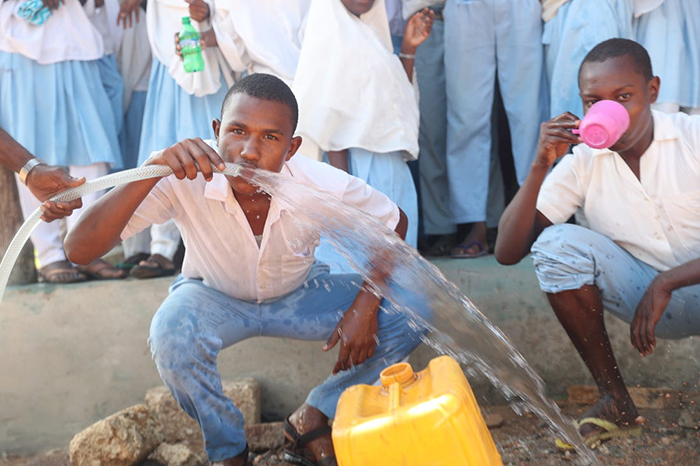- About
- Topics
- Story
- In-Depth
- Picks
- Opinion
- News
- Donate
- Signup for our newsletterOur Editors' Best Picks.Send
Read, Debate: Engage.
| November 12, 2018 | |
|---|---|
| topic: | Renewables |
| tags: | #geothermal, #Kenya, #Africa, #environment, #energy |
| located: | Kenya |
| by: | Bob Koigi |
They carry steam from volcanic valleys in the area to various plants. The labyrinthic flow of the pipes represents Kenya’s attempt at tapping into underground steam to generate electricity as it looks to diversify its energy portfolio. This, as it borrows lessons on cheaper ways of using power to grow economy from Iceland and New Zealand, the frontrunners in geothermal power.
Kenya is at the centre of the East African Rift, one of the largest rift valleys globally estimated to be about 3,700 miles in length and 40 miles across. The volcanic activities in this rift have given rise to sulphurous springs that gush hot water and steam, a phenomenon that Kenya has harnessed in electricity generation.
It is a venture the country has pursued since the late 1970s, becoming the first country in Africa to go after geothermal power. This, as it sets to meet the growing electricity needs of its people, power businesses and economy and reduce the use of fossil fuels by the year 2030.
About 40 per cent of the country’s 49 million people do not have reliable electricity service even as the population is poised to grow to 90 million by the year 2050 further putting a strain on energy access. According to the government, year on year demand will grow by approximately 8 per cent in the next three years before rising to nine percent in 2021.
The country has predominantly relied on hydroelectric power which has proven erratic and expensive as drought takes a toll on water sources which have been diminishing over the years. The ripple effect has been power rationing and high electricity bills, the country performing dismally in the various cost of doing business indices. Investors have always cited unreliable and expensive power as the biggest barrier to business in Kenya.
“It has been extremely expensive for the country to connect homes and businesses in the last mile using conventional power. Most of the people in these areas do not use electricity a lot or cannot afford it. Even as the government steps up its resolve to ensure sustainable, efficient and uninterrupted supply of energy to its people as part of its agenda, it has become a logistical and financial challenge,” said Engineer Joram Mutiso from the Ministry of Energy.
Aware of the numerous competing needs, the country has gone full throttle in harnessing the geothermal energy producing 700 megawatts and is currently rated ninth in the world in production, and the first in Africa, according to a Renewables Global Status 2018 report, with the geothermal providing 50% of all the country's energy needs. In the Olkaria field, the largest geothermal hub in the country, up to 1,000 megawatts of power is available for tapping, enough to meet most of the needs of the populace.
Companies that have already tapped into this power are reaping immense benefits and improving the competitiveness of Kenya’s products, especially in international markets.
Flower farms, located around Lake Naivasha are the biggest beneficiaries. Oserian Flower Farm, for example, has tapped into the underground steams to heat its greenhouses and generate electricity for its power plants.
The company that sells up to 700,000 stems of flowers each day in international markets says that some of its rose varieties require round the clock heating which would be too expensive if it was to rely on conventional energy. It is now able to save up to $750,000 each year on power bills.
Now experts are looking at how they can replicate the success in the flower farms to other industries including drying of foods, brewing and medicine through therapeutic spas.
“We have so much we need to tap and utilise and have only used a fraction of what exists underground. And in the spirit of doing away with fossil fuels, geothermal is the way to go because of its sustainability and the fact that it doesn’t produce any greenhouse gases that are associated with global warming. It also guarantees steady and uninterrupted energy supply unlike what currently exists,” said Patrick Wanjala from Kenya Electricity Generating Company, KenGen, the largest power producing company in the country.
The World Bank says that the geothermal energy being tapped in the Kenyan rift is capable of powering 150 million homes. With this grand project, Kenya wants to emulate Iceland that invested in geothermal development in the '70s lifting it from poverty and which has been described as the sustainable energy model of the world.
By copying the embed code below, you agree to adhere to our republishing guidelines.
